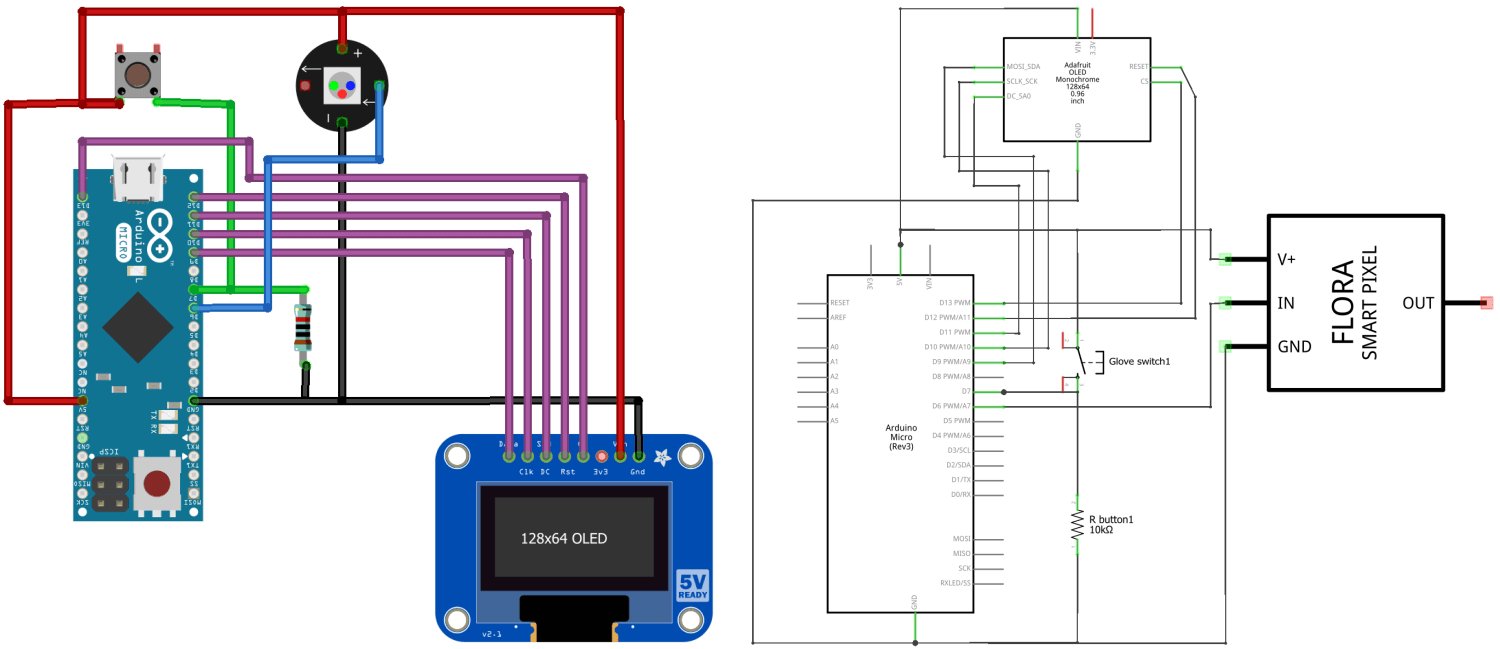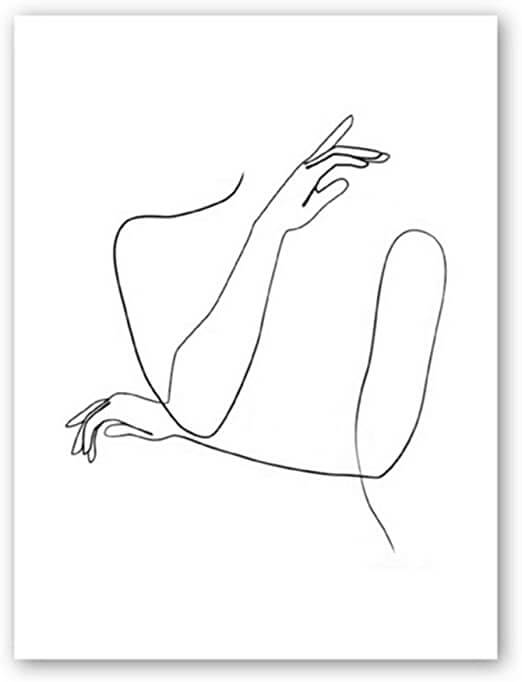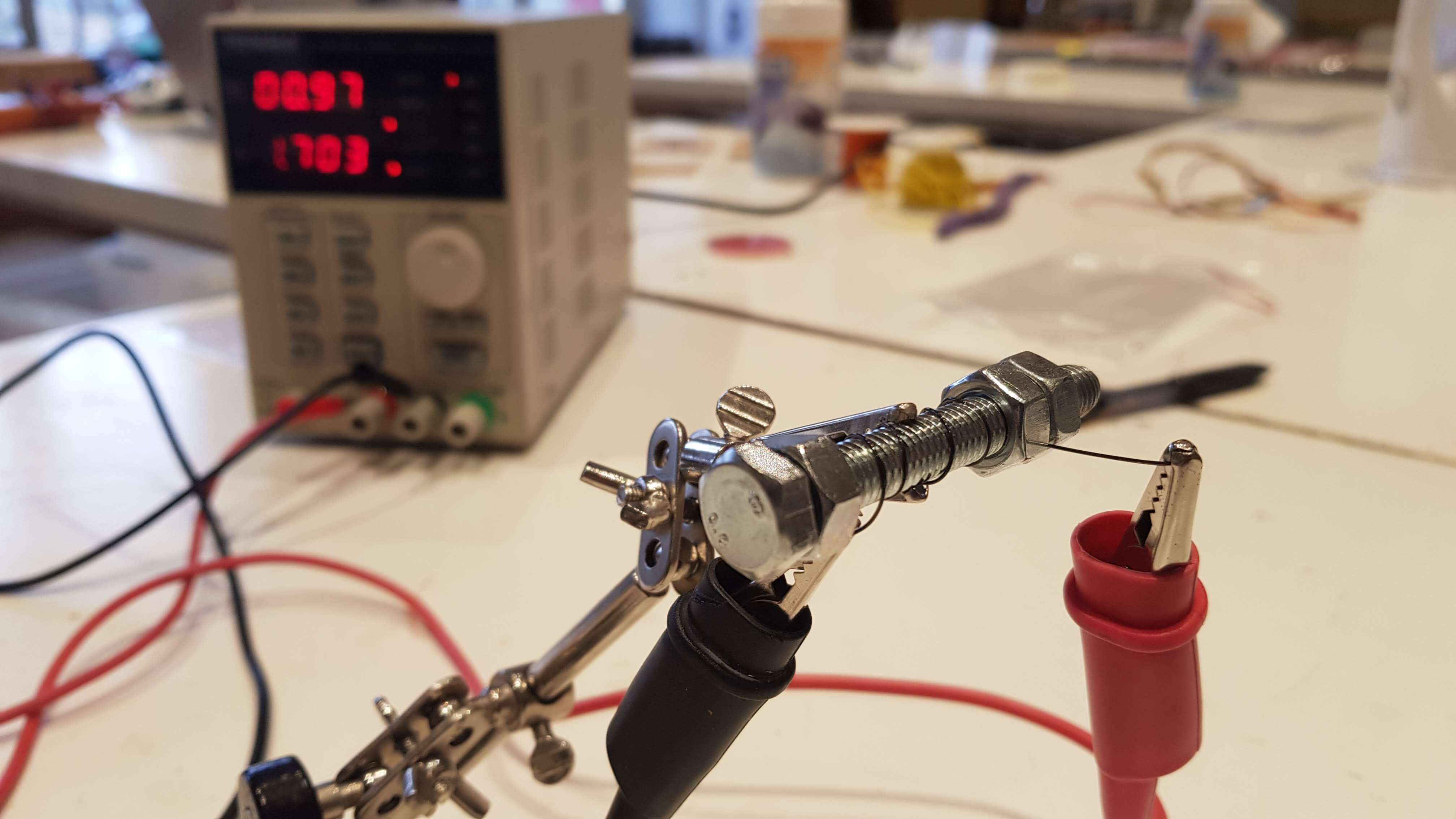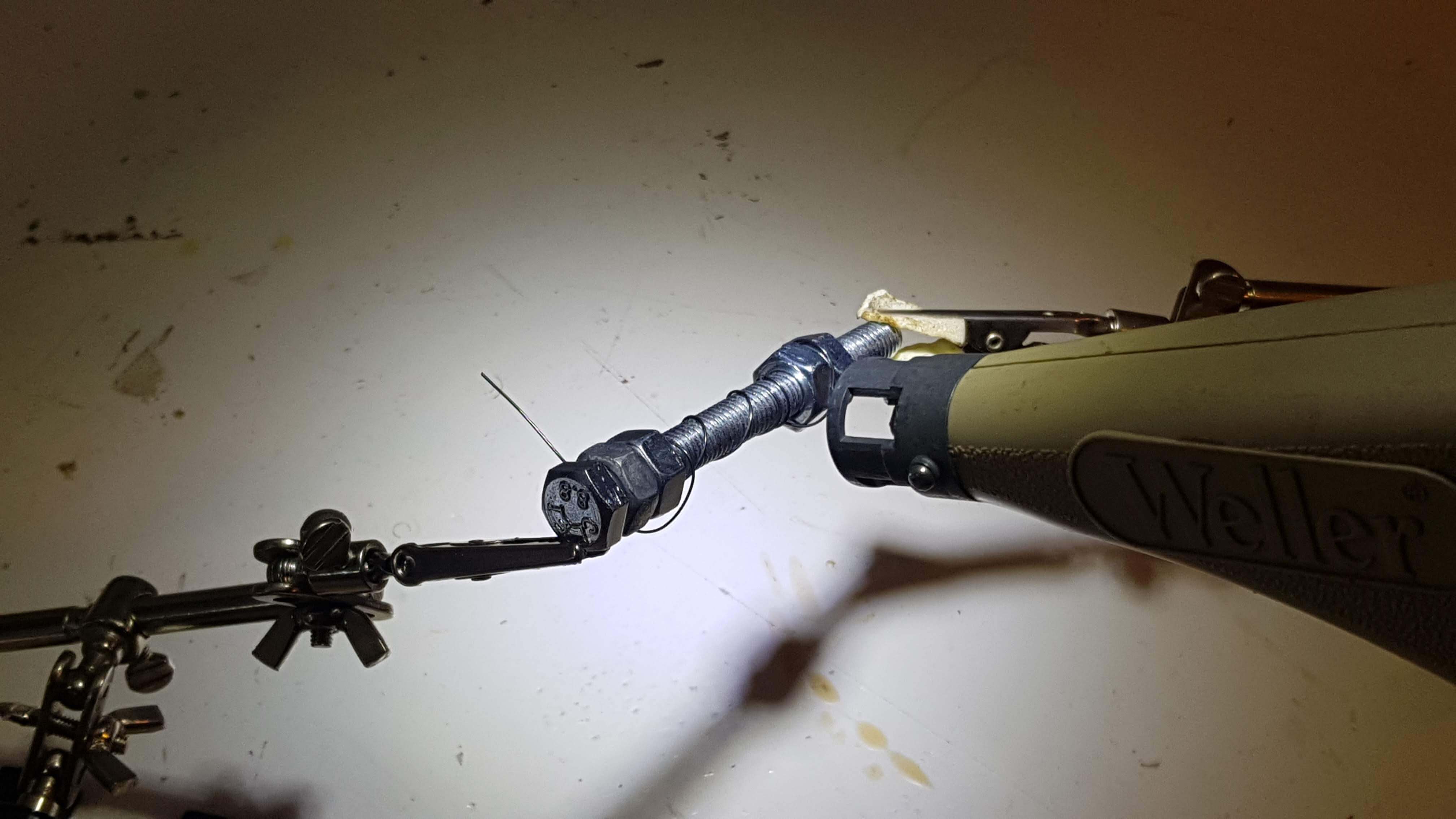Wearables¶
Final work of the week¶
This week I had the chance to explore different actuators that can be embedded in textiles and wearables. I made an overview of the ones we have explored during the week and emphasized those with which I experimented more in depth.

Find below the different outcomes of this week's exploration.
Measuring glove version 2¶
During E-textiles week I spent quite some time working on the measuring glove prototype. That week was enough for a first iteration on the design, but I wanted to continue adding functionality during this week.
Improvements over version 1
I focused on how the user would interact with the glove, for which I created a more elaborate user interface with screen, lights and functions triggered by touch.
- Added reset functionality to start a new measurement
- Added neopixel for visual feedback
- Added display to show measured distance
I added functionality on the previous prototype, and the resulting diagram is as shown below.

In the video you can see the prototype in action.
Get the code!
The full code is stored in Github
Thermochromic ink¶
Thermochromic ink has the ability to change color or dissappear when temperature changes. To test this I wanted to do something more artistic and not necessarily functional. So I started thinking of embroidery with e-textile conductive thread that, when plugged to a battery, would warm up and change the ink color. More info about these kind of threads can be found in my page from E-textiles week.
Looking for inspiration I saw a bunch of one line drawings and I thought that would be a great place to start! I finally decided to replicate the design below (source).

I created the piece as follows:
- I found a leftover piece of fabric from circular fashion week large enough to paint with the ink and show nicely the design. It is approximately the size of an A4 sheet of paper.
- The thermochromic ink I was using comes in powder form. Therefore, I got some white acrylic paint and mixed it with the powder to create a medium I could brush onto the fabric.
- After painting and letting it dry completely, I embroidered the design using running stitch and a single piece of conductive thread. I left plenty of thread on the ends of the drawing to have enough play to connect the battery.
- Using crocodile clips I connected the ends of the conductive thread to a common 9V battery to see the thermochromic ink dissapear.
Shape memory alloy (Flexinol)¶
Shape memory alloys are materials which can remember a certain shape over time. This means that even when they are deformed, they will go back to their "trained" shape under certain circumstances (usually heat or applying an electric current). This can be very interesting to make moving actuators.

Working with this material proved to be harder than expected. Making it go to its programmed shape is very easy, but training it to a new shape was more complicated than expected. Together with Patty, we went on a quest to re-train a straight piece of Flexinol into a spiral.
We wrapped the wire around a bolt, and then connected it to a power supply to apply some current. We couldn't find how much power (voltage, current) we should apply, so we tried a few different things, but none of them worked.

So we went on with plan B, using heat. Luckily we found a heat gun in Waag that we could use, and using a similar setup with the wire wrapped around the bolt, we proceeded to apply heat for at least 10 minutes. This process worked! Although the trained shape resulted in a loose spiral instead of the tight spiral we were looking for.

In summary, it was a nice first approach to shape memory alloys and I think we were too cautious on how much power and heat we were applying. That is why we had a hard time training the wire.
In the video below you can see a summary of the process and results.